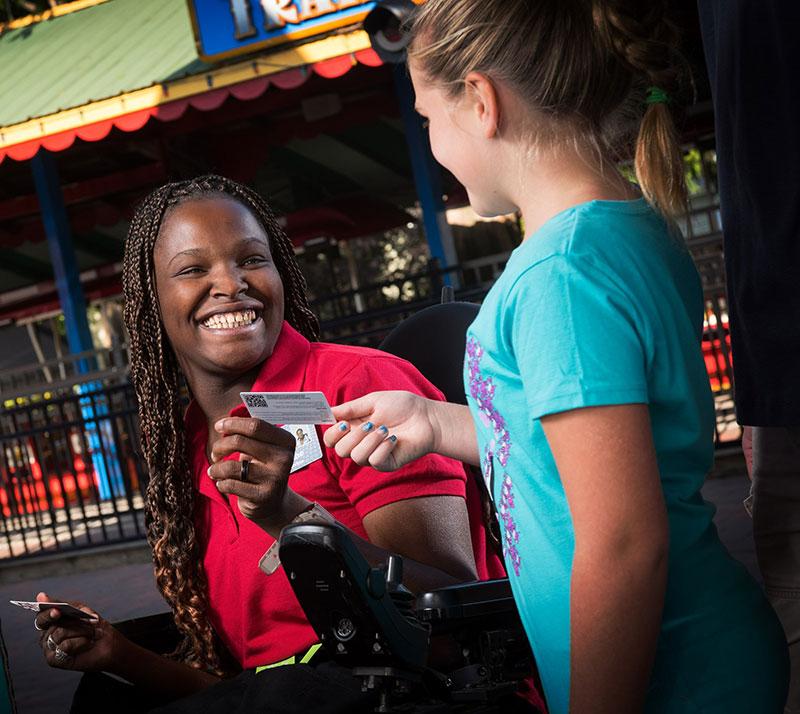Smart Ways to Make Money in a Post-Pandemic World
After two years of pandemic closures, the global attractions industry is looking to boost revenue and attendance this year as the world continues to reopen.

Cashless Innovations
For the 2022 season, and going forward, Hersheypark is no longer accepting coinage or paper dollars to pay for admission, food, and retail goods. Instead, the Hershey, Pennsylvania, park is accepting payments through credit and debit cards, Hersheypark gift cards, Apple Pay, Google Pay, and Samsung Pay.
“Those guests who may not have credit or debit cards can convert cash to prepaid debit cards without a fee at our Cash-to-Card kiosks stationed around the park,” says Vikki Hultquist, general manager of attractions and entertainment at Hershey Entertainment & Resorts Company. “Our pre-paid cards can be used anywhere Visa is accepted. A Hersheypark e-gift card is also an easy option accepted all over the park from a barcode on a mobile device.”
By removing cash from its transactions, Hersheypark is saving money on its sales operations. After all, it takes less time to swipe a credit card or tap a smartphone than it does to run a cash register and make change, resulting in more customers being served in the same time period. This being said, going cashless “is not intended as a money-saving move,” Hultquist says. “Instead, it allows us to realize efficiencies and redeploy staff to enhance the guest and employee experiences. And the transactions are faster and more secure for both the guest and our accounting department.”
Not having to store, count, and deposit cash—especially using armored cars—also saves money for operators. They can remove this cost without affecting their revenues because guests will simply pay by other means.
“The most basic advantage is that cashless transactions eliminate the cash fiddles that used to plague parks, despite the ever-increasing efforts of management to control them,” says David Camp, senior partner at D & J International Consulting. “More importantly, it makes guests less conscious of their immediate spending. If a guest started a day with $40 in their purse, they will be very aware of how fast that is being used up by in-park purchases. When guests tap on for a cashless purchase, they are far less aware of the exact amount spent and so are likely to spend more money. Furthermore, in family groups where children and young people have cards, they can make their own purchases rather than having to ask parents for cash, thereby increasing spending further.”
Palace Entertainment’s Lake Compounce in Bristol, Connecticut, is also adopting the same payment model.
“The switch allows for a smoother and safer experience for guests, cutting down on wait times and creating a better in-park experience,” Lake Compounce said in a news release. Other Palace parks, such as Dutch Wonderland and Story Land, are also going cashless.
Cedar Fair is taking its parks cashless this year, too, as part of an overall cost-efficiency effort that includes touch-free transactions and labor management tools, according to Cedar Fair President and CEO Richard A. Zimmerman in the company’s 2021 fourth-quarter and full-year results. These moves are “all aimed at improving the guest experience and creating a more nimble, efficient, and cost-effective operating model,” he said.

Money-Making Tactics
Camp says one way to increase revenues and post-pandemic profits is by encouraging guests to prepay for their visits beforehand online.
“With prebooking of admission tickets, food deals, ride photo packages, and up-charge offers, guests arriving at the park do not have the same financial mindset as if they had had to pay a few hundred dollars at the gate before getting in,” Camp explains. “This results in stronger levels of in-park spend, particularly on impulse items.”
Choosing the days and times that guests can prebook their admissions allows park operators to better manage their staffing needs and product inventory, which is especially important in these times of labor shortages and rising supply chain costs.
“One of the advantages of prebooking is that attractions can have a greater control over the volume and flow of guests arriving at, and spreading around, the park,” Camp says. “This allows for greater understanding of the volume of food and beverage (F&B) likely to be consumed and staffing requirements. If the prebooking can include a main F&B purchase, such as lunch at a set time window and a set venue, then far more accurate controls of F&B costs will be possible.”
Adopting dynamic pricing, a flexible pricing strategy with variable prices depending on demand, can also boost existing revenue streams.
“When done right, dynamic pricing can be used to encourage people to visit at off-peak or shoulder periods, maximize revenue during peak periods, and control the volume of guests in the park,” Camp says. “However, when booking, guests will need to feel that they understand the price framework and what the price differential is between different days and weeks of the year. Not many attraction websites do this, and this is frustrating for customers. Therefore, having a monthly calendar showing the adult price on each day is a lot more useful for customers than them having to select a specific day, number of guests, and time of arrival before being told the price.”
All of this said, amusement park and attractions operators should consider putting “guest satisfaction” first when making changes, or they may end up alienating and losing customers in the long term.
“Attracting even more guests is not necessarily the best way forward,” Camp warns. “Keeping guests entertained, coming back, and growing Net Promoter Scores (NPS) is more important. All attraction managers should have this at the top of their mind at all times.”
- James Careless is a Canada-based writer who covers the attractions industry for Funworld.
